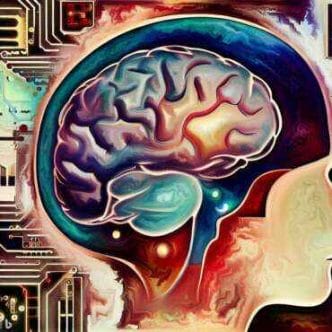We like to think that we are in control of our purchase decisions. That we won’t just click any random recommendation. That we won’t end up buying something we never thought we needed.
The truth?
Free will is an illusion!
According to Apiumhub, around 80% of all customer interactions and touchpoints on e-commerce platforms are managed by artificial intelligence (AI) technologies, without any human interference. This means an all-knowing AI overlord knows what you’d want to purchase and woos you to “add to cart” at your gullible most. Sounds insidious. But is it always a bad thing? Could these recommendations, in fact, be useful for you? Could they be making your life easier?
How Does E-Commerce with AI Look?
AI has been a part of e-commerce for some time now. It’s just that with the conversations around AI booming, the general public is only now beginning to realize that AI-enabled tech services have been shaping their user experience for years. Companies are always searching for new and improved ways of integrating AI into their website to enhance the efficiency and effectiveness of their online business.
AI has significantly contributed to customized shopping experiences, product suggestions, and logistics management in e-commerce.
The key use cases of AI in e-commerce include:
-
Personalized Product Recommendations: Data collection and data processing for customers’ online buying experiences are now simpler than ever. Websites make personalized product recommendations using AI, based on historical consumer behavior and the buying trends of other customers within the same persona. Websites that recommend items a customer might like based on previous purchases use machine learning to analyze purchase history. Retailers rely on machine learning to take data, evaluate it, generate customer insights, and create a tailored experience that includes everything from custom marketing campaigns to optimized pricing. Overall, personalized product recommendations for online shoppers are increasing conversion rates by 915% and average order values by 3%.
-
Improved Customer Service: With the help of chatbots and virtual assistants, it is now possible to provide higher-touch customer assistance. While these bots aren’t totally self-reliant, they can perform simple transactions, leaving live support employees free to focus on more difficult issues. Virtual agents are also accessible 24×7, allowing for quick resolution of basic queries and difficulties at any time. Plus, capabilities like Natural Language Processing (NLP) allow them to interpret voice-based interactions with consumers and provide personalized and targeted offers.
-
Logistics Intelligence: Real-time data from sensors, RFID tags, and other sources is at the heart of smart logistics, also known as intelligent logistics. It aims to manage inventories and accurately predict demand. ML systems get smarter over time, providing better forecasts for supply chain and logistics tasks. They can project or anticipate changes in product demands and flag potential supply-related issues that could impact inventory levels. The development of autonomous robotics, which is seen as the future of AI in e-commerce, is helping optimize warehouse management. Unlike human staff, AI robots can be called upon at any given time of the day to store or retrieve inventory and ship ordered products at a moment’s notice.
-
Decreasing Product Returns by Customers: One of the biggest challenges for an e-commerce company is product returns. AI is helping businesses tackle this as well. For instance, the clothing retailer Zara is using AI to recommend appropriate clothing sizes based on the customer’s measurements and preferred styles, like loose or tight clothing. As a result, the fashion company is seeing a decrease in product returns and an increase in recurring business.
-
Bridging the Gap between Online and Offline: Omnichannel AI solutions that integrate online and offline retail channels to deliver a consistent and seamless consumer experience can be critical for a brand’s success. AI-based omnichannel solutions use computer vision, natural language processing, and ML to bridge the gap between in-person and online consumer experiences. Features such as “3D try-on” (think Lenskart) are using this exact technology.
 Image by Freepik
Image by Freepik
Embracing AI in E-Commerce
Artificial intelligence is helping businesses generate creative solutions and improve user experiences in e-commerce. AI has significantly contributed to customized shopping experiences, product suggestions, and logistics management in e-commerce. This not only improves customer satisfaction but also increases sales and customer loyalty.
To enhance their analytical insights, better tailor the consumer experience, and boost their competitiveness, e-commerce firms are increasingly turning to AI. However, ethical concerns such as privacy infringement and biased algorithms must be carefully addressed to ensure the responsible and equitable use of AI in e-commerce. By embracing AI while maintaining ethical standards, businesses can unlock their full potential and deliver enhanced experiences to their customers. In fact, any company today that does not leverage AI in e-commerce may be left behind — like an abandoned cart from a disinterested user.
____________
Written By: Nimesh Bansal



 Image by Freepik
Image by Freepik










